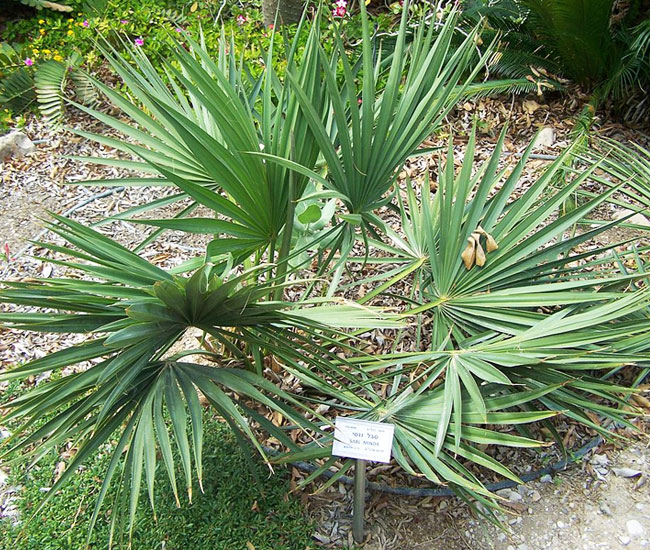
Dwarf Palmetto, scientific name Sabal minor, is native to Georgia, and Florida and west to Texas and Northeast Mexico. This durable palm adapts to a wide range of soils and can even tolerate standing water.
It is very cold tolerant surviving temperatures as low as 0F. Some think that Sabal minor is more cold tolerant than needle palm which is considered to be the hardiest palm growing in areas with wet winters. Sabal minor is one of 14 palms native to the United States.
Quick Facts:
| Scientific name: | Sabal minor |
| Common names: | Dwarf Palmetto Palm, |
| Origin: | Seeds, germinate in 2-3 months. |
| Growth Rate: | Slow. Up to 5 – 6 ft tall and 4 – 5 ft wide. |
| Cold Tolerance: | USDA Zones 7 (0F – 5F) to 10b (35 – 40 F). |
| Light Req: | Full sun to partial shade. |
| Water Req: | High drought tolerance (once established). |
| Soil Req: | Widely adaptable |
| Fruit: | Yes. Black. Not toxic. Not edible. |
| Propagation: | Seeds, germinating in 2-3 months. |
Dwarf Palmetto Palm Appearance
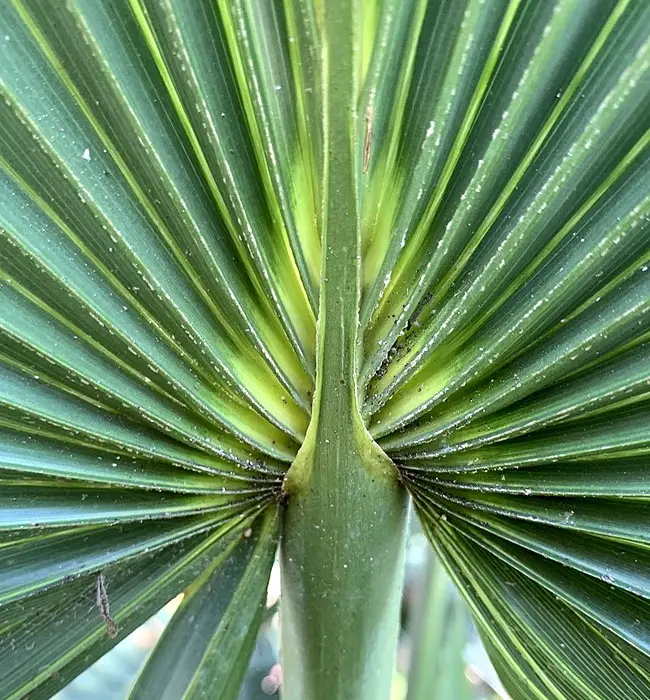
While dwarf palmetto resembles and often is confused with saw palmetto, unlike saw palmetto it does not have spines on the sides of stems and does not form invasive colonies.
This clumping plant has a single trunk that is hiding almost entirely underground. It has fan-shaped deep green leaves with a ‘V’ split in the middle. It can slowly grow up to about 5-6 feet in height with 4-5 feet spread.
Dwarf Palmetto Palm Flowers and Fruits
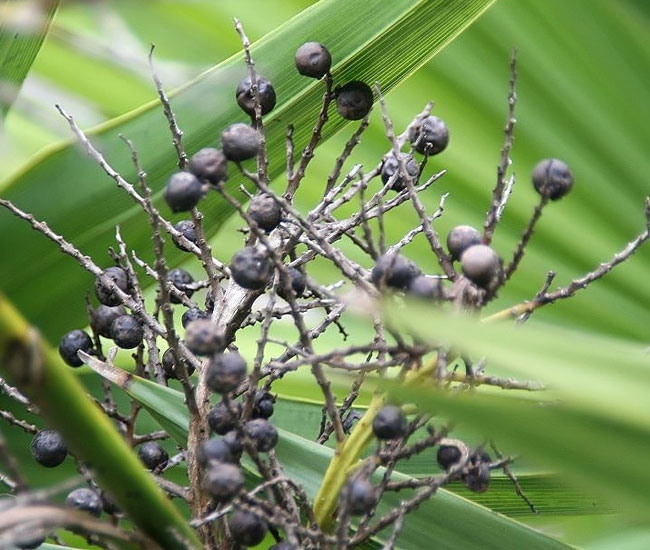
During spring, Sabal minor produces small white bisexual flowers that grow in dense clusters. Flowers are supported by 3 – 6ft long branched inflorescence emerging from among the leaves.
Flowers are followed by small fruits 3/8″ in diameter that turn black and shiny when ripe. These fruits are not toxic. In fact, they feed robins, woodpeckers, mockingbirds, and other wildlife. They are not very tasty for humans.
Light Requirements For Sabal Minor
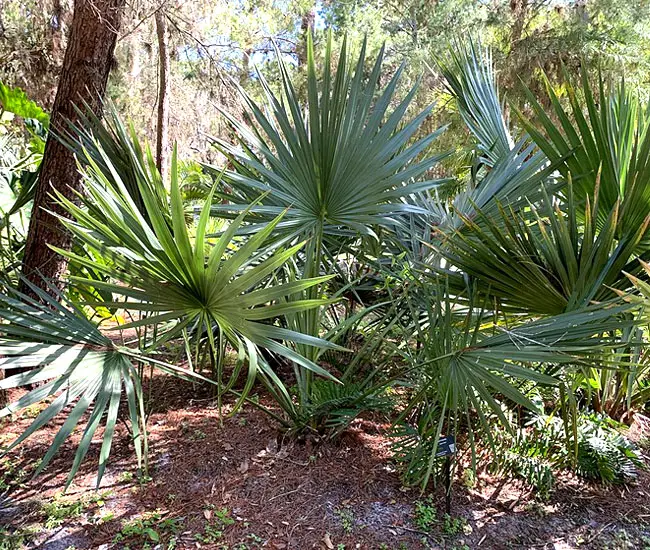
This plant has moderate to low light requirements. This makes it a perfect plant for growing in partial shade areas where few palms could be otherwise grown.
You can plant it underneath taller palms that have large canopies. While it also grows well in full sun, younger plants should be protected.
As an indoor plant, dwarf palmetto can be placed in a sunny room with indirect light.
Soil Requirements For Dwarf Palmetto Palm
This widely adaptable palm can grow in acidic or alkaline soil as long as it’s well-draining. Highly organic soils work the best, but they can also grow in clay.
Since in the wild it’s often can be found growing in wet forest areas, it can tolerate being in standing water without rotting.
Because it’s salt tolerant, it can be planted in saline soils near walkways or driveways that get de-icing salt.
Watering Dwarf Palmetto Palm
Sabal minor naturally grows as an understory plant in wet areas and can even survive in standing water over the winter months. While it’s drought tolerant when mature enough, younger plants should be protected from drought in the first few years.
Establish a regular watering schedule for its first three years while it’s establishing. Water a newly planted palm every day for the first week, every other day for the second week, and then switch to its regular watering schedule.
The best time to water it is in the evening when the sun is not blazing outside. A few inches of mulch will help keep the soil moist longer.
Fertilizing Sabal Minor
Sabal minor usually does not have any nutrient deficiencies but still enjoys regular feedings. Dwarf Palmetto likes soils rich in manganese and magnesium.
Apply good quality slow-release fertilizer that is specially formulated for palm trees. It’s best to apply fertilizer during the growing season unless you live in a tropical climate where it’s always a growing season.
Best Temperature For Growing Dwarf Palmetto
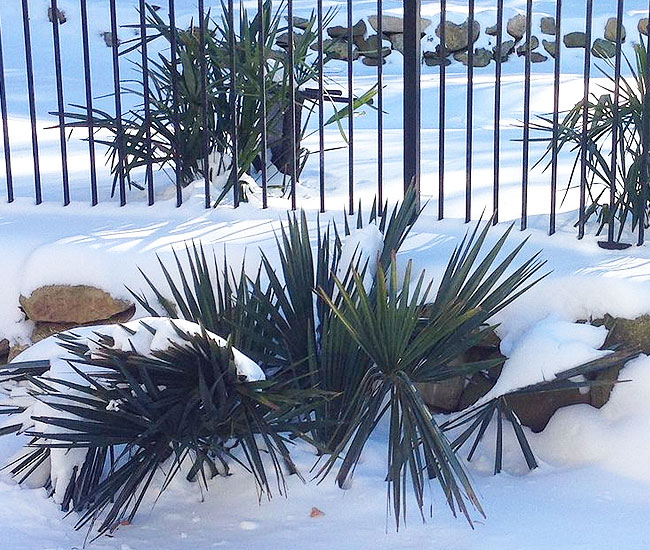
Similarly to needle palm, dwarf palmetto likes climates with hot humid summers and is dramatically less cold tolerant if grown in cool-summer areas. It grows best in the USDA Zones 7 (0F – 5F) to 10b (35 – 40 F).
It can tolerate short exposure to 0F when mature enough but will get leaf damage after exposure to temperatures as low as -5F or prolonged periods of subfreezing weather. It’s also known to survive temperatures as low as -24F.
The reason why this plant quickly recovers from intense cold is because its bud generally remains underground level. Of course, we are talking about mature established plants that have been in the ground in the same location for over three years.
Younger plants are more sensitive to cold especially accompanied by chilly wind.
Pruning Dwarf Palmetto Palm
Since there is no trunk, there is very little pruning needed. All you need to do is just remove old brown leaves that are already dry.
Propagating Dwarf Palmetto Palm
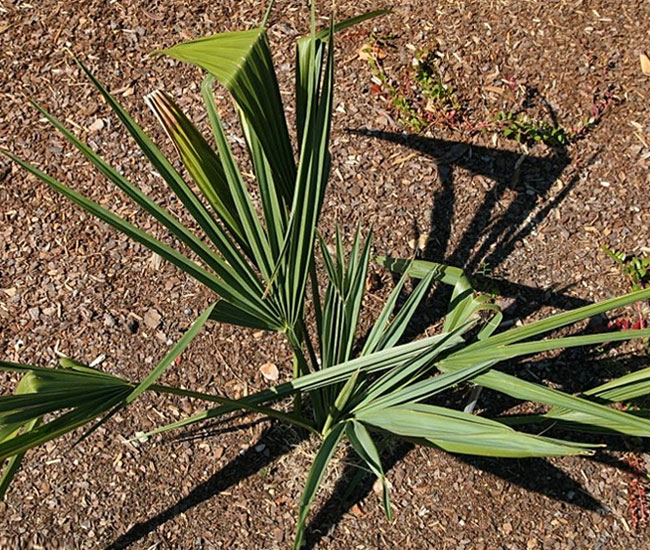
Dwarf Palmetto produces flowers from May through June that are followed by fruits shortly thereafter. After harvesting the fruit, separate the seed from the fruit pulp.
Sow fresh seed in a moist, muddy material and keep it moist until you see seedlings emerging.
Transplant young seedlings into a tall container, like a tall cup, to allow deep roots to spread. After the roots have developed enough, transplant them into the ground.
Keep young in-ground plants moist until they are well established which will take a couple of years. Once established, they are very hardy and can tolerate dry periods.
Dwarf Palmetto Insects and Diseases
There are no significant diseases or pests that affect this palm.
Landscaping With Sabal Minor
This specimen looks awkward and out of place on its own. It’s not best for the focal point of the garden. It works great as a shrub in planting beds with other foliage plants.
A grouping of Sabal minor will create a tropical look especially when mixed with other broadleaved evergreens and different groundcovers.
Transplanting wild plants can be problematic. Because plant growth begins well below the ground, if you cut it above this area while digging, it will not survive transplanting.
You should follow the shoots deep down to the apex from where they emerge and then cut below this union. Plant it at the new location and keep it moist while the new root system develops.
It is much easier to get it in the container from the nursery. Because it’s so slow growing, would recommend getting the largest plant available.
Growing Dwarf Palmetto Palm Indoors
Dwarf Palmetto works well as a container plant and can be grown indoors as a houseplant. It adapts to a wide range of soils, can tolerate drought and cold, and can grow in partial shade.
Pick a bright spot with direct or indirect light near the window but away from HVAC vents. Since it likes high humidity, dry air coming from vents will dry up the leaves.
Make sure the container has a drainage hole at the bottom and the soil is well draining. Overwatering will not be a problem since Sabal minor can tolerate standing water without rotting.
Because it’s so slow growing, it will take years before you have to re-pot it. However, change up the potting mix every three years to freshen up the soil.
To slow down salt buildup in the pot, water it with distilled or bottled water. To get rid of the salt buildup, you should water the palm repeatedly with generous amounts of rainwater or distilled water. If I don’t forget, I do it about once a year.
For more tips on how to grow palm trees indoors, check out this post.
How Fast Do Dwarf Palmetto Palms Grow?
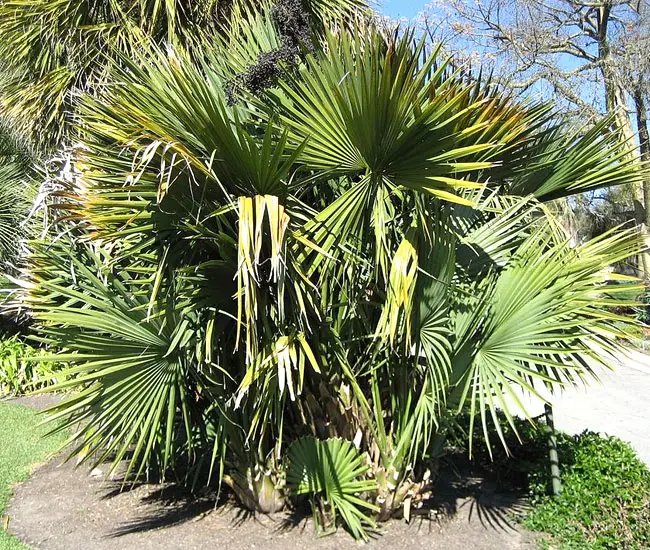
This is a very slow-growing palm that grows to only about 6 ft in height growing about only 5 inches per year. You can expect to see only two or three new leaves per growing season.
Because the trunk is located underground, only the leaves extend about the soil surface. It can take it about 15 years to finally form above the ground trunk.
Dwarf Palmetto vs Needle Palm vs Saw Palmetto
Because all of these cold-hardy palms look very similar, I wanted to give you this comparison table so you can see how they measure up against each other when it comes to durability and care.
| Dwarf Palmetto (Sabal minor) | Saw Palmetto (Serenoa repens) | Needle Palm (Rhapidophyllum hystrix) | |
|---|---|---|---|
| Max Height: | 5 – 6 ft | 3 – 6ft | 5 – 10 ft |
| Cold Tolerance: | 7 to 10b | Zones 8a to 11 | 7 to 10b |
| Min. Survival Temp: | -10F | 5F | -10F |
| Water Req: | Drought tolerant | Drought tolerant | Drought tolerant |
| Light Req: | Full sun to partial shade | Full sun to partial shade | Full sun to partial shade |
Dwarf Palmetto Palm Pictures
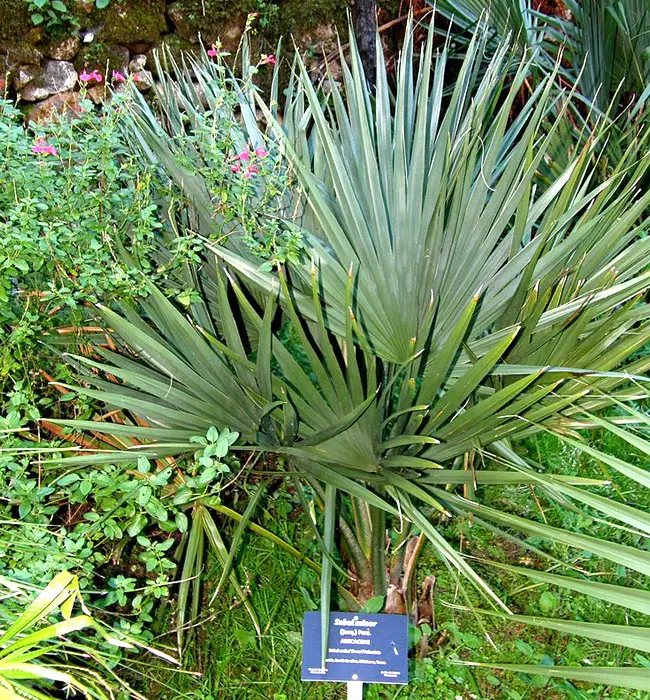
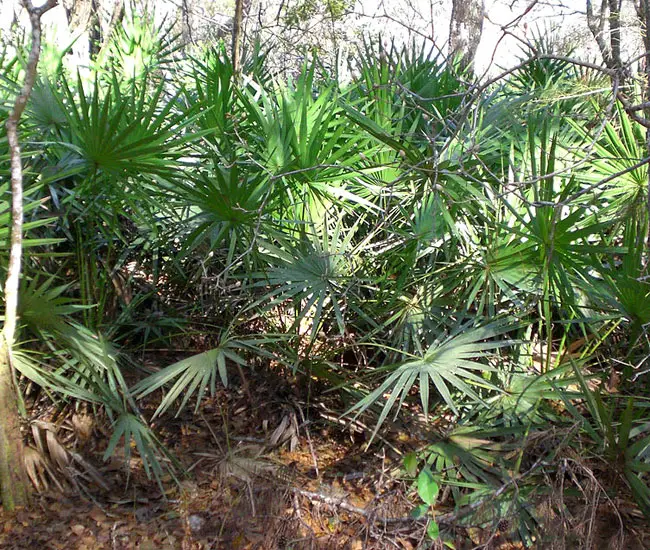
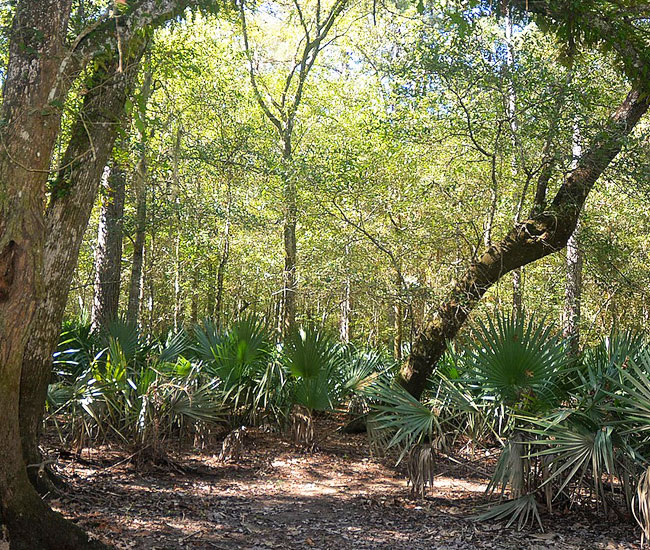
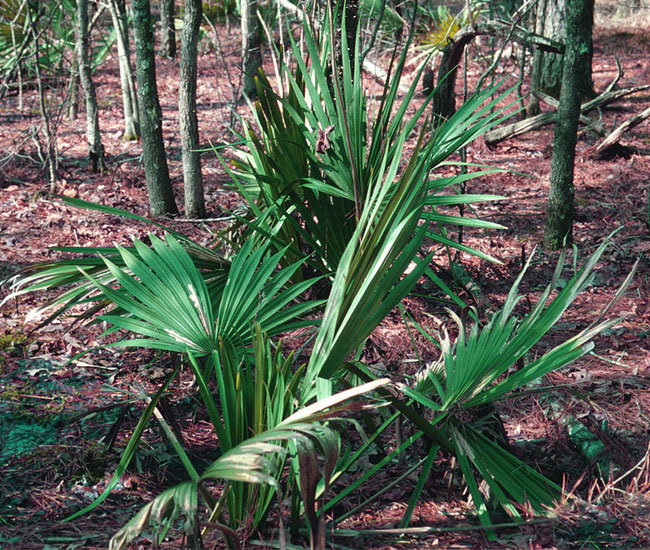
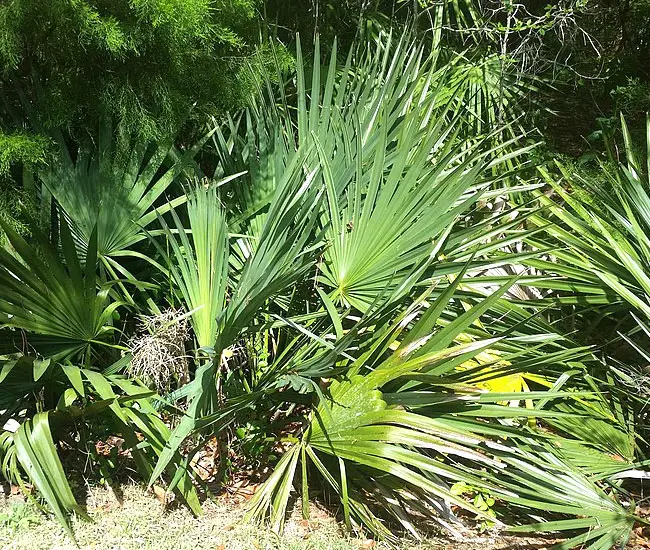
Related posts:
–How To Care For Indoor Palm Trees And Not To Kill Them
–Top 20 Palm Trees That Can Survive Freezing Weather
–How to Grow and Care For Needle Palm
